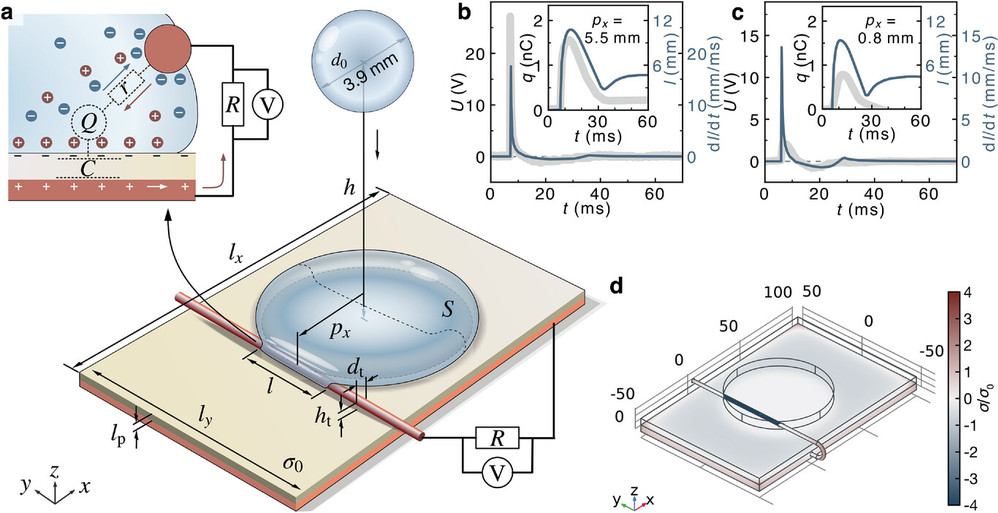Hongbo Zhang, Bingkun Tian, Xiaofeng Jiang, Luxian Li, Minmin Xue, Wanlin Guo, Zhuhua Zhang
Advanced Functional Materials,First published: 25 February 2024
Recent experiments have demonstrated an extremely high output voltage of 260 V by impinging droplets on an electret surface with top and back electrodes. However, the mechanism underlying the generated high voltage remains elusive. Through high-speed imaging of the impinging water droplet, it is found that the recorded voltage is proportional to the change rate of contact length l between the droplet and the top electrode over time, that is, dl/dt. By combining an electrostatic model with multi-physics simulations, the time-dependent charge distribution on the top electrode is analytically described as a function of several key factors pertaining to the spreading dynamics of droplet and the geometrical dimensions of device. These results show that the high voltage originates from the accumulation of charge in the spreading droplet and the ensuing instantaneous discharge upon high-speed contact with the top electrode. Using the model-optimized parameters, the experimentally generated voltage from a falling 64 µL droplet with a 2 mm salt can be boosted to 1030 V, giving rise to an energy conversion efficiency as high as 3.3%. This conversion efficiency will further increase by 14 times if the surface charge density of the electret can be enhanced to its limit using state-of-the-art fabrication techniques.

Link: https://doi.org/10.1002/adfm.202315912